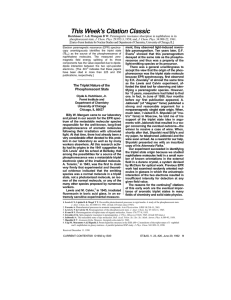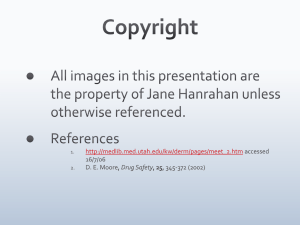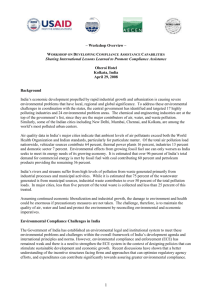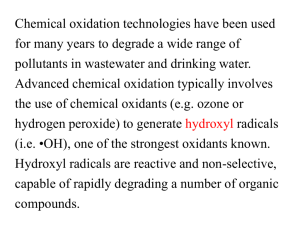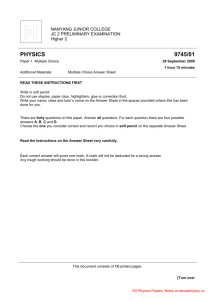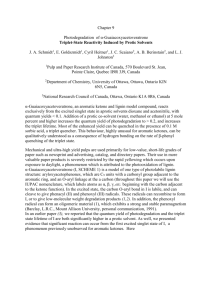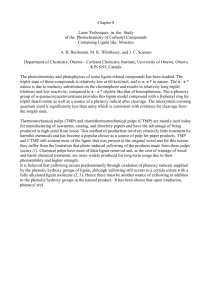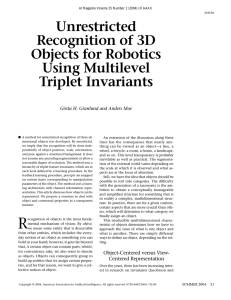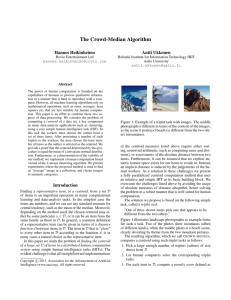Supplemental material for “Pulsed EPR study on large dynamic
advertisement
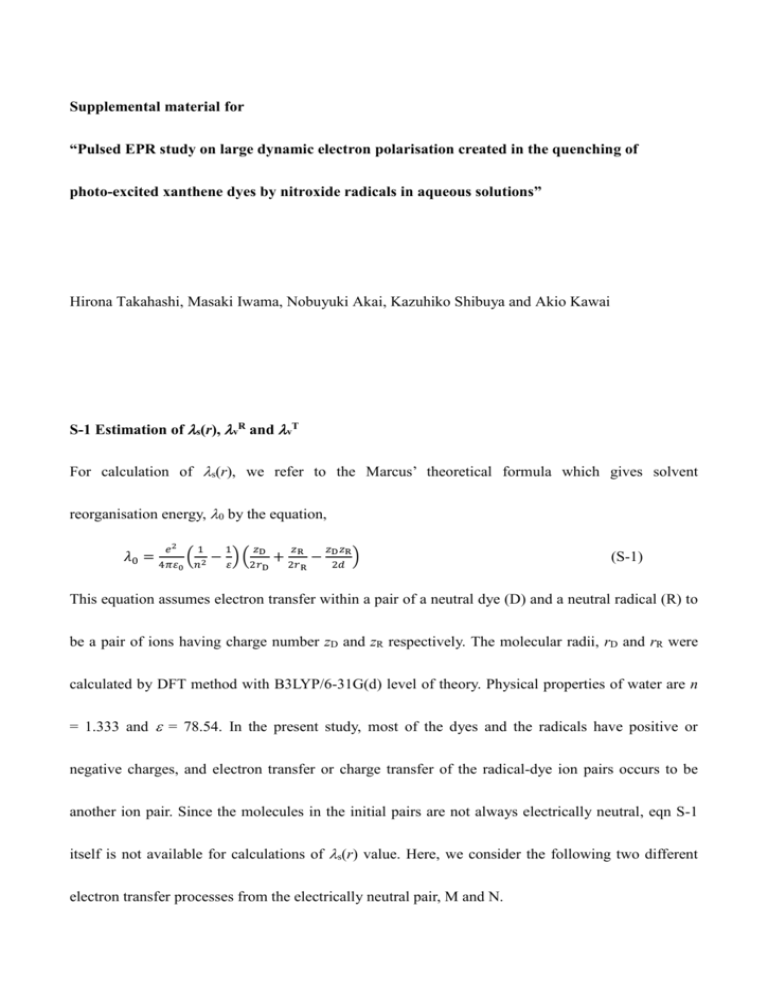
Supplemental material for “Pulsed EPR study on large dynamic electron polarisation created in the quenching of photo-excited xanthene dyes by nitroxide radicals in aqueous solutions” Hirona Takahashi, Masaki Iwama, Nobuyuki Akai, Kazuhiko Shibuya and Akio Kawai S-1 Estimation of s(r), vR andvT For calculation of s(r), we refer to the Marcus’ theoretical formula which gives solvent reorganisation energy, 0 by the equation, 𝑒2 1 1 𝑧 𝑧 𝜆0 = 4𝜋𝜀 (𝑛2 − 𝜀 ) (2𝑟D + 2𝑟R − 0 D R 𝑧D 𝑧R 2𝑑 ) (S-1) This equation assumes electron transfer within a pair of a neutral dye (D) and a neutral radical (R) to be a pair of ions having charge number zD and zR respectively. The molecular radii, rD and rR were calculated by DFT method with B3LYP/6-31G(d) level of theory. Physical properties of water are n = 1.333 and = 78.54. In the present study, most of the dyes and the radicals have positive or negative charges, and electron transfer or charge transfer of the radical-dye ion pairs occurs to be another ion pair. Since the molecules in the initial pairs are not always electrically neutral, eqn S-1 itself is not available for calculations of s(r) value. Here, we consider the following two different electron transfer processes from the electrically neutral pair, M and N. M+N → Ma+ + Nb- + e (a-b)- M+N → M (a+1)+ + N (b+1)- + e (a-b)- with 02(r) with 03(r) (S-2) (S-3) Solvent reorganisation energies, 02(r) and 03(r), of the reaction processes, S-2 and S-3, were calculated using eqn S-1. The electron transfer process of the present interest is M a+ + N b- → M (a+1)+ + N (b+1)- with s(r) (S-4) s(r) value is then calculated by the relation s(r) = 03(r) - 02(r). For all the pair systems of the present study, similar calculations were carried out depending on the charges, a and b, of the molecules of the initial pairs. Concerning the calculation of vR for radicals, we carried out DFT calculation with B3LYP/6-31G(d) level of theory for electronic energies of a radical cation (1R+) at two different optimised structures of the radical (2R) and cation (1R+). The difference between these two energies corresponds to vR value. Similarly,vT for triplet molecules was obtained by subtraction of calculated electronic energies for optimised structures of 1Dye and 2Dye–. S-2 Time resolved-EPR spectra of the triplet state of Rose Bengal To calculate dynamic electron polarisation of TEMPO radical generated in the quenching of the triplet state of Rose Bengal by TEMPO in water, zero-field-splitting value of the triplet Rose Bengal is necessary. We measured TR-EPR spectrum of the triplet Rose Bengal in ethanol glassy matrix at 77 K. Figure S1 shows observed and simulated spectra of the triplet Rose Bengal. The spectral simulation was done with zero-field-splitting parameters D = 1300 G and E = 60 G which are reported values for erythrosine B. The simulated spectrum shows good agreement with observed one in Ms=1 transitions appearing from 2000 G to 4600 G. The peak position of Ms=2 transition at 1500 G is also reproduced although the line-width is somewhat narrower in observed spectrum. From the simulation, Dzfs = 2.3×1010 rad s-1 was obtained, as listed in Table 3 of the text. Figure S1. Observed and simulated time-resolved-EPR spectra of the triplet state of Rose Bengal in a ethanol glassy matrix at 77 K. The spectrum was measured with observation time-window from 0.5 to 1.0 s after 355 nm laser excitation. Parameters used in the simulation were D=1300 G, E=60 G, linewidth of 300 G, and the population ratio Px:Py:Pz = 0:0:1.

